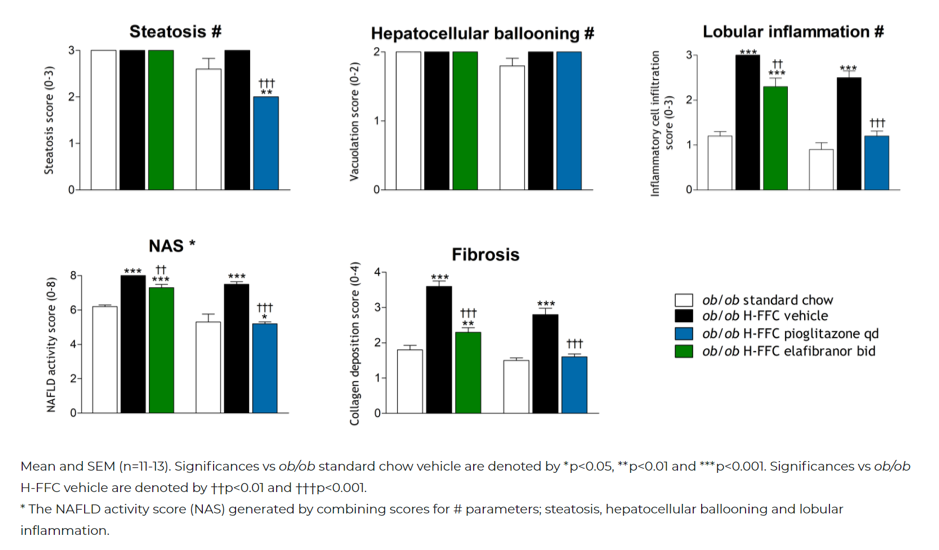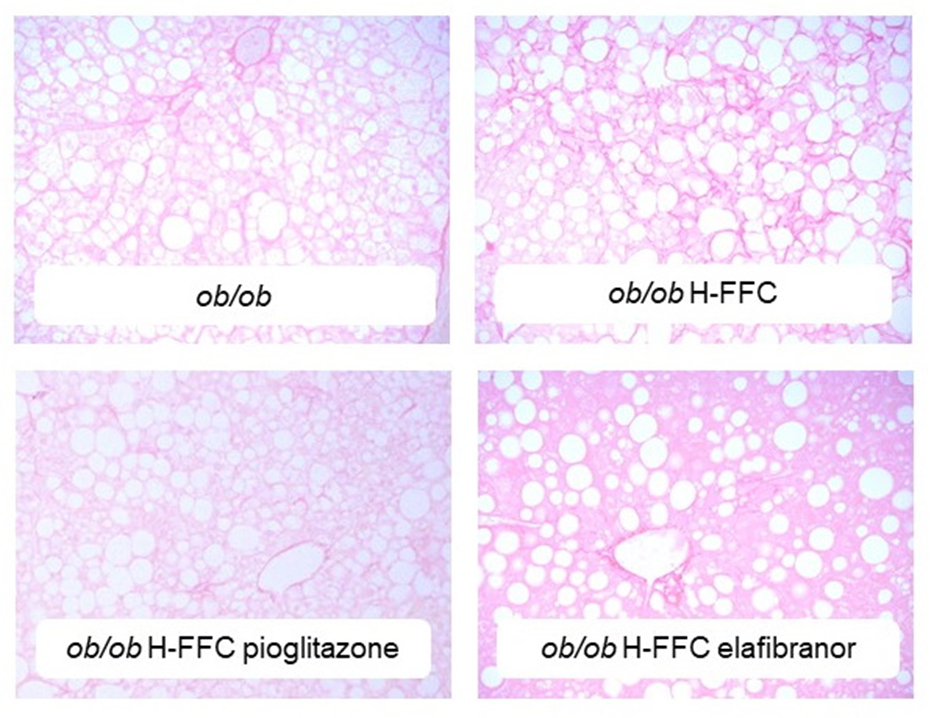The ob/ob H-FFC mouse model of NASH and fibrosis
Non-alcoholic fatty liver disease (NAFLD) encompasses a spectrum of disease ranging from simple steatosis to non-alcoholic steatohepatitis (NASH) and cirrhosis. Patients with NAFLD have an increased risk of liver-related mortality, with approximately 9% of those with NASH developing cirrhosis, which can lead to end-stage liver disease. The risk factors for progressive NASH-related liver disease are obesity, type 2 diabetes, insulin resistance and older age. With no approved therapies for NASH this is an area of high unmet therapeutic need. When testing potential treatments of NASH it is important to consider not only the liver endpoints but also the associated co-morbidities.
We have established and validated a model of NASH and fibrosis which combines the liver pathology alongside obesity and insulin resistance, the ob/ob H-FFC mouse. In this model ob/ob mice are maintained on a diet high in fat, fructose and cholesterol for 12 weeks. In this time they develop an increase in:
- Plasma ALT and AST
- Liver lipids and collagen content
- Histological end points: lipid deposition, lobular inflammation, overall NAS score and moderate to marked fibrosis
The ob/ob H-FFC mouse has been validated with the peroxisome proliferator activated receptor (PPAR) gamma agonist, pioglitazone, and the dual PPAR alpha/delta agonist, elafibranor.
The ob/ob H-FFC mouse model of NASH and fibrosis has all the liver hallmarks of the disease observed in man

Mean and SEM (n=11-13). Significances vs ob/ob standard chow vehicle are denoted by *p<0.05, **p<0.01 and ***p<0.001. Significances vs ob/ob H-FFC vehicle are denoted by ††p<0.01 and †††p<0.001.
* The NAFLD activity score (NAS) generated by combining scores for # parameters; steatosis, hepatocellular ballooning and lobular inflammation.
The ob/ob H-FFC mouse develops bridging fibrosis which can be inhibited by pioglitazone and elafibranor

Representative images from the NASH and fibrosis rodent model. Sirius red stained liver sections, magnification 20x demonstrating the difference between the ob/ob vehicle, ob/ob H-FFC vehicle, ob/ob H-FFC pioglitazone po bid and ob/ob H-FFC elafibranor po qd groups
